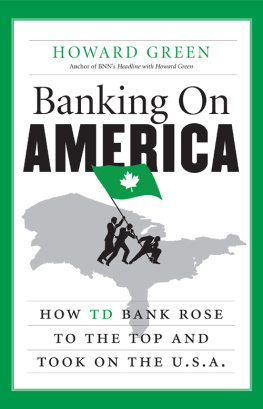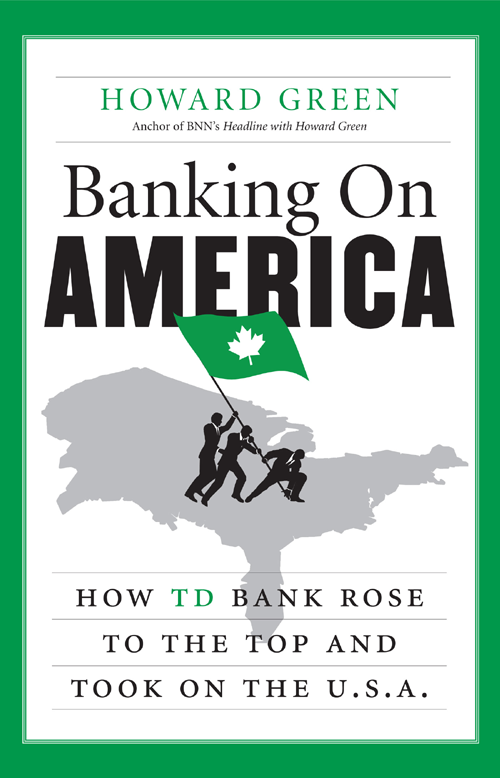TOOK ON THE U.S.A.
In the fall of 1980 I was twenty-one years old and in my last year at Carleton University in Ottawa. I was a journalism student, but I had also taken a ragtag collection of half a dozen economics courses, many of which I have to confess I slept through. Somehow, after a summer of reporting for the local television news in my hometown of Halifax, I had finagled my way into a part-time reporting gig from Parliament Hill, no less, filling in for a guy who ran a brisk business supplying dispatches from Ottawa to various regional stations across the country.
I shudder to think about that wet-behind-the-ears, freckled, baby-faced reporter proclaiming from the mount. But there I was and it was around that time that the name Ed Clark entered my consciousness. Its only a dim memory, but one day a document called the National Energy Program (NEP) landed on us scribes in the press gallery, bound like a big workbook. It was part of the fall 1980 federal budget, but was deemed to be so important that it was a stand-alone document. The energy minister at the time, Marc Lalonde, was a close confidant of Liberal Prime Minister Pierre Trudeau, who had risen from the political ashes one more time for what would be his last four years in office. I did not know what Ed Clark looked like or whether he was in the room when Lalonde announced the NEP and faced the press, but it was as though a bomb had dropped.
Leafing through the pages of the National Energy Program, I struggled to understand it. I have no idea how I managed to cobble together a report for the evening news. But it didnt really matter. Those who needed to know about it let the rest of the country know what it meant. The oil- and gas-producing province of Alberta was in a rage. Here was Ottawa trying to run its business. The oil barons pointed their fingers in one direction, at a young civil servant named Ed Clark, the assistant deputy minister of energy who had written the National Energy Program. To them, he was a socialist.
Clark, however, managed to keep his job in Ottawa. Even better, he was soon named Civil Servant of the Year and got to take a paid sabbatical in Paris. But when the Progressive Conservative Party of Brian Mulroney came to power in 1984, the new government pushed the eject button and Clark was gone.
A period passed when I lost track of this shooting and falling star. In the 1990s, though, I noticed the name Ed Clark on brochures when Id wander into Canada Trust, an upstart financial institution that was stealing market share from the big banks with crazy giveaways and promotions. (My first credit card was a Canada Trust MasterCard with a $500 limit, bestowed on me during my last year at Carleton.) Could this be the same Ed Clark?
Clark shot to national prominence again in 19992000 when TD Bank bought Canada Trust. Here was this guy who at one point was viewed as a pinko now in line to run one of the countrys big banks. An intellectual, cool-headed, self-proclaimed people person with a gift for communication, Clark was suddenly centre stage and would soon embark on one of the most ambitious forays by any Canadian company into the shark-infested U.S. market.
The first time I met Ed Clark was in late 2003. He had been CEO of TD for about a year and I had arranged to meet him for a coffee. We met in Clarks fourth-floor office and sat at his conference table, both of us having removed our jackets. His first line to me was Youre a Maritimer! and he went on to talk about how great East Coasters were, how they didnt take themselves too seriously. My initial internal reaction was What a suck-up this guy is.
But he cursed like an ordinary guy, which made him seem unaffected and likeable. We went on to talk about books and then politics and finally got around to banking. In particular, we talked about the juicy topic of whether bank mergers were possible or necessary in Canada. At one point, I brought up the argument made by Clarks predecessor, Charles Baillie, that in Canadian banking you needed more scale to compete internationally. In other words, it would be to the banks advantage to spread their considerable costs over a bigger array of branches and services. At the time, Clark said that therein lay the difference between him and Baillie. That view would obviously change, because Clark would make more major acquisitions than any Canadian bank CEO of his eraor of any era. Knowing the politics of Ottawa cold, he clearly concluded that in-country mergers would never happen in Canada and set his course directly for the United States, the Bermuda Triangle for several Canadian CEOs whod gone before him.
Later, I read Gerald Pencers book The Ride of My Life. Pencer was a controversial, hyper-aggressive entrepreneur. Clark was hired to clean up Pencers mess at Financial Trustco. Of Clark he wrote, He proved to be an excellent negotiator. Hes Mr. Smooth. He should go down as one of the best bullshitters of all time. Pencer meant the latter description as a compliment. This guy Clark was someone who could talk and persuade. Youd leave a session with Ed convinced he was the most clear-headed, down-to-earth guy ever and that everyone else was full of it.
Before Ed Clarks time at TD, though, there was a senior executive named Keith Gray. I first met Gray in late 1996. I had phoned Toronto-Dominion Bank, trying to drum up something to shoot for Venture, a popular CBC-TV magazine program that chronicled the exploits of business people. Charles Baillie had recently taken the reins as TD CEO, and I thought it would be fun, and saleable, to shoot a feature on the new man at the top. I was curious about banking. Canadian banks had a mystique. They were big and made a lot of money. Their leaders were the top drawer of the countrys elite. I was nosy and I wanted to take viewers inside the hallowed halls along with me.
I got a phone call back from a woman in the communications department of the bank, Heather Conway. She sounded almost bored, as though this call wasnt much of a priority. Conway said the new boss, Baillie, would be happy to participate in a Venture feature, but he would prefer if it were about the banks burgeoning discount brokerage division rather than about him. At the time, it didnt matter much to me. I was selling my wares story by story to Venture. If I could tell the shows executive producer that I was in the door at the bank, that was good enough to bag another job. I arranged a meeting with Keith Gray and his colleague Duncan Gibson.
Keith Gray was Mr. Discount Brokerage. At the time, he was CEO of TD Green Line, the discount brokerage business within the bank. Gibson, a tall, polite man with a thin face, was ostensibly Grays boss. He was executive vice-president of wealth management, running one of the banks key business lines into which Grays Green Line reported. But when we sat down, it was clear that Gibson was Grays boss in name only. Gray dominated the meeting. He had once been Gibsons boss and he still acted as though he were.
We discussed what would be required if we were to do a mini-documentary on the discount division. They wanted to know if they could see the program before it aired. I said no. I also told them that while we would not try to trip them up, if we witnessed conflict while we were filming, we would reserve the right to show any bun fights on the air. Warts and all was the agreement. The discussion then turned to the subject of whom we would follow. Gray was the more intriguing character. He had spunk. He was the entrepreneur.







